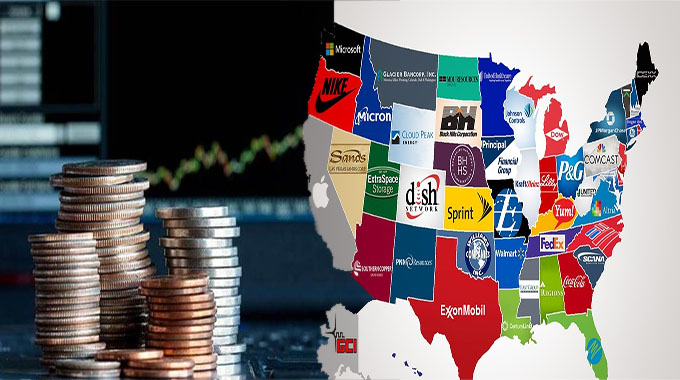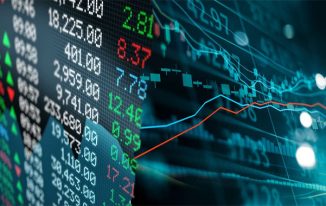When it comes to global stock markets, the U.S. equity market is the largest, deepest, and most efficient. In fact, U.S. stocks make up 41.6% of the global equity market cap, which is nearly $49 trillion. This is more than three times larger than the next largest market. Over the past decade,
U.S. stocks have grown by more than 4% a year and have peaked at 42.0% in 2021.
List of the world’s largest companies by market capitalization
The world’s largest companies by market cap are determined by a calculation based on share price and number of outstanding shares. Prior to the recent rise of technology companies like Tencent and Xiaomi, Japanese-based companies dominated this list. However, as the US dollar has strengthened, American firms have taken over the top spot. Below is a list of the top 10 companies in terms of market cap. But how do you get started?
To start, the list is divided into a series of tables containing the top 50 companies by market cap. Each table shows the number of outstanding shares for each company, the market cap in billions of dollars, and the percent change in the stock’s price. Each company’s listing includes summary statistics and a comparison to the Dow Jones index. The data is updated daily after the closing of the market.
S&P 500
The S&P 500 index is composed of 500 of the largest publicly-traded companies worldwide. The companies in this index range from nearly $1 trillion to under $1 billion in market cap. The S&P index fluctuates in value based on performance-weighted market data. The formula for the index’s weighting is simple. To determine the market cap of a company, its outstanding shares must be multiplied by the current share price.
While most companies make up a majority of the S&P index, some do not make it that high. Apple, for example, accounts for nearly one-fourth of the index’s value. But the parent company of Google, Alphabet, has two different share classes. The C shares of the company are nonvoting, while the A shares are fully-voting and count toward the index’s valuation. Alphabet’s C and A shares alone would make up nearly 4% of the S&P index’s market cap.
Dow Jones
The stock market index, the Dow Jones, is the largest company in the world by market capitalization. The Apple Company is one of the most well-known companies in the world, and their market cap crossed 2.2 trillion dollars on Jan. 1st, 2021. This company designs, manufactures, and sells products, such as computers and mobile phones. Listed below are some of the largest companies in the Dow Jones. Read on to learn more about the companies listed on the Dow Jones.
Home Depot has long been a favorite of investors who are playing the housing market. It was profitable during the COVID-19 recession and analysts believe that shifting consumer behavior will help the company return to its market beating ways. Others are a bit wary, however, due to rising rates and input costs. But analysts recommend Buy with high conviction. While the Dow Jones is not immune to global stock market losses, it is holding up better than other major benchmarks.
S&P MidCap 400
The S&P MidCap 400 is the largest index of US stocks. Mid-caps are popular among investors with aggressive portfolios, and they have the potential to grow. However, investors should be aware that mid-caps aren’t immune to losses in value. While mid-caps are often the most stable companies, they are less susceptible to the volatile share price of smaller companies.
The S&P MidCap 400 index includes many household names from various major industries. It includes Domino’s Pizza, American Eagle Outfitters, Energizer Holdings Inc, and World Wrestling Entertainment. This index is an average of the different market caps of US stocks. Despite the size of these companies, mid-cap stocks have a greater potential for growth than their smaller cousins.
S&P SmallCap 600
The S&P SmallCap 600 is a cap-weighted index for the smallest US stocks. It tracks stocks with a market capitalization between eight hundred million and $3.6 billion. The criteria for inclusion in the index include financial viability, stability, liquidity, and market capitalization. S&P 600 stocks cannot overlap with the S&P’s larger-cap indices. Several index ETFs track the performance of the S&P SmallCap 600.
The S&P SmallCap 600 index measures the small-cap sector of the U.S. stock market. It tracks companies with a market cap of less than $1 billion. Companies that meet this criteria are generally considered to be financially viable and liquid. The index is also useful for investors in smaller companies because the average market cap of these companies is significantly less than $1 billion. In addition, the index helps investors evaluate the performance of small-cap fund managers.
NASDAQ
The NYSE and the NASDAQ are two of the largest US stock exchanges by market cap. Market capitalization measures how much money a company is worth based on the number of outstanding shares. Although NYSE is the oldest, the Nasdaq has been in existence since 1971. Listed companies are valued according to their market capitalization, and NASDAQ has more companies than the NYSE. Both exchanges focus on a different type of trading – dealers and auctions.
The NASDAQ Composite Index is made up of domestic and international stocks, and includes many popular technology companies. The Nasdaq has the largest market cap, and is market cap weighted, which means that the largest companies make up most of the index. Another stock index made up of Nasdaq companies is the Nasdaq 100. The Nasdaq 100 contains only the top 100 companies, and it contains an even heavier concentration of technology stocks.













